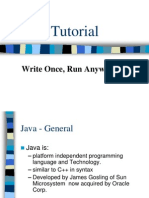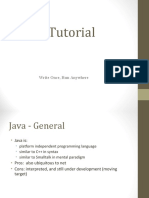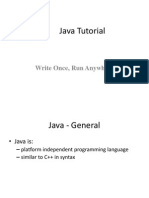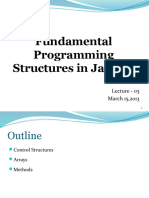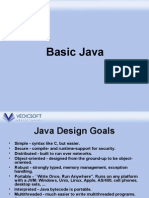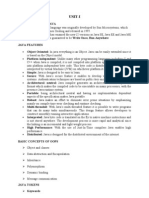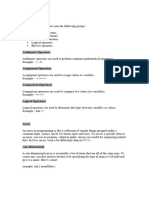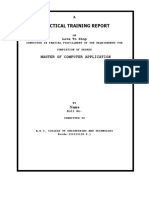0% found this document useful (0 votes)
78 views35 pagesSamed Jukić Mihret Sarač
Java is an object-oriented programming language that was originally designed in 1991 for consumer electronics but was later adopted for web programming. Java code is compiled to bytecode that runs on a Java Virtual Machine, making Java programs platform independent. Key features of Java include automatic memory management, multithreading support, and a powerful standard library. Java uses primitive data types like int and double as well as object references. Programming constructs in Java include if/else statements, for loops, arrays, and classes.
Uploaded by
Samed JukicCopyright
© Attribution Non-Commercial (BY-NC)
We take content rights seriously. If you suspect this is your content, claim it here.
Available Formats
Download as PPTX, PDF, TXT or read online on Scribd
0% found this document useful (0 votes)
78 views35 pagesSamed Jukić Mihret Sarač
Java is an object-oriented programming language that was originally designed in 1991 for consumer electronics but was later adopted for web programming. Java code is compiled to bytecode that runs on a Java Virtual Machine, making Java programs platform independent. Key features of Java include automatic memory management, multithreading support, and a powerful standard library. Java uses primitive data types like int and double as well as object references. Programming constructs in Java include if/else statements, for loops, arrays, and classes.
Uploaded by
Samed JukicCopyright
© Attribution Non-Commercial (BY-NC)
We take content rights seriously. If you suspect this is your content, claim it here.
Available Formats
Download as PPTX, PDF, TXT or read online on Scribd
/ 35


